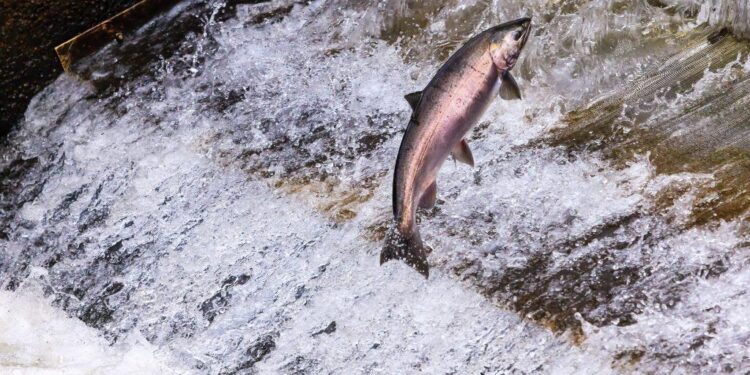As salmon and steelhead populations face mounting pressures from climate change, habitat loss, and fishing, scientists are racing to pinpoint the critical extinction thresholds that could push these iconic Northwest fish to collapse. New research emerging from the Pacific Northwest sheds light not only on the fragile status of these anadromous species but also underscores the vital role of ocean fish communities off the coasts of northeast Oregon and Idaho. This article explores the latest scientific findings on extinction thresholds for salmon and steelhead, while examining how oceanic ecosystems in the region influence their survival, highlighting urgent conservation concerns reported by the Idaho Capital Sun.
Salmon and Steelhead Extinction Thresholds Reveal Alarming Population Declines
Recent studies indicate that the populations of both salmon and steelhead in the Pacific Northwest are perilously close to what scientists call extinction thresholds. These thresholds represent critical points beyond which recovery becomes vastly more difficult, if not impossible. Factors driving these declines include habitat degradation, altered river flows due to dams and water diversion, and changing oceanic conditions fueled by climate change. Alarmingly, some river systems in northeast Oregon and Idaho are witnessing declines of over 70% in returning adults compared to historical averages, signaling a looming ecological crisis.
Conservationists and fisheries managers have identified several key areas demanding immediate attention to prevent collapse:
- Restoration of spawning habitats through improved riparian zones and sediment management.
- Reevaluation of water management policies to ensure adequate flow during critical migration periods.
- Ocean ecosystem monitoring focusing on prey availability and temperature fluctuations impacting juvenile survival.
- Enhanced hatchery protocols aimed at preserving genetic diversity and minimizing disease transmission.
| Species | Historic Average Returns | Current Returns | % Decline |
|---|---|---|---|
| Spring Chinook Salmon | 50,000 | 14,000 | 72% |
| Steelhead Trout | 30,000 | 9,500 | 68% |
| Summer Chinook Salmon | 25,000 | 8,000 | 68% |
Ocean Fish Impact on Northeast Oregon Ecosystems Underscores Urgent Conservation Needs
The complex interplay between ocean fish species and the freshwater ecosystems of northeast Oregon has reached a critical juncture, raising alarms among conservation scientists and local communities alike. Recent studies reveal that salmon and steelhead populations are teetering near extinction thresholds, largely influenced by shifting oceanic conditions and habitat degradation along migratory routes. These changes not only threaten iconic species but also disrupt the intricate food webs that sustain both aquatic and terrestrial environments in the region.
Key factors driving this fragile balance include:
- Climate-induced ocean warming: Alters prey availability and spawning success.
- Predation pressure from expanding ocean fish populations: Competes with juvenile salmon for vital resources.
- Habitat fragmentation: Limits migration corridors and breeding grounds inland.
| Species | Population Decline (%) | Primary Ocean Impact |
|---|---|---|
| Chinook Salmon | 45% | Prey scarcity |
| Steelhead Trout | 52% | Temperature stress |
| Coho Salmon | 38% | Predation increase |
Urgent, science-driven conservation measures are essential to reverse these trends, focusing on habitat restoration, adaptive fishery management, and ocean ecosystem monitoring. Only through integrated efforts can northeast Oregon’s ocean fish dynamics be balanced to preserve both the natural heritage and the economic lifeblood of local communities.
Experts Call for Targeted Habitat Restoration to Prevent Irreversible Species Loss
Scientists emphasize that without immediate and focused efforts to restore critical habitats, iconic species such as salmon and steelhead face the brink of irreversible decline. Restoration projects that prioritize spawning grounds, riparian zone rehabilitation, and water quality improvement are vital in reversing the negative trends exacerbated by climate change, pollution, and habitat fragmentation. Experts underscore that generalized conservation efforts fall short; instead, precision-guided strategies must address the unique ecological needs of different river systems and incorporate local environmental variables.
Key restoration priorities include:
- Reestablishing cold-water refuges through shade restoration
- Removing or modifying dams to improve fish passage
- Enhancing sediment transport to rebuild spawning beds
- Protecting and replanting native vegetation along stream corridors
| Restoration Focus | Expected Outcome | Timeline |
|---|---|---|
| Dam Modification | Improved fish migration | 3-5 years |
| Riparian Replanting | Water temperature stabilization | 2-4 years |
| Spawning Bed Rehabilitation | Increased reproduction success | 1-3 years |
In Retrospect
As salmon and steelhead populations continue to face mounting pressures from habitat loss, climate change, and water management challenges, the latest extinction threshold science underscores the urgent need for coordinated conservation efforts. In northeast Oregon, where ocean fish serve as crucial indicators of ecosystem health, stakeholders must prioritize adaptive strategies to safeguard these iconic species. The Idaho Capital Sun will continue to follow developments closely, providing readers with timely updates on the race to protect the region’s aquatic heritage before it slips beyond recovery.































